This classic little sauropod is best viewed today as a relic, a curious piece of memorabilia nestled between more interesting figures which came before and after it.
If you were to ask a veteran toy collector about vintage dinosaurs, you’d probably hear Marx cited first. Marx was a pioneer in the 1950s, producing the first-ever widespread plastic dinosaurs for kids (and maybe their parents). The second name you might hear is MPC, or Multiple Products Corporation. Numerous companies followed Marx’s example into the 1960s and 1970s, but MPC followed Marx’s success the most closely – which is to say, MPC flagrantly copied many of the mold designs for their own. Of the 24 figures MPC released, only 5 were original species; however there was another sculpt early on which was also unique to the brand, which I have chosen as the subject this review.
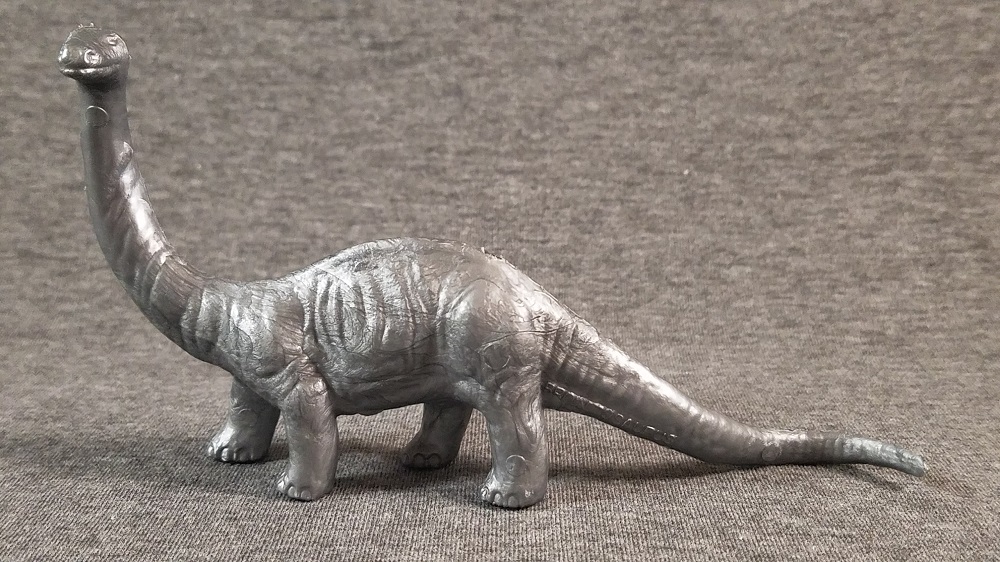
MPC’s first series of dinosaurs was released in 1961, separated between three mold groups. The first group featured Trachodon, Tyrannosaurus, and Kronosaurus, all of which were noticeably derived from Marx’s molds of the same species. The fourth figure in the group was Brontosaurus; unlike the other figures in this group, MPC opted to design a whole new sculpt for the sauropod. To my knowledge, the reasons why MPC chose to re-sculpt only this one figure is undocumented. Perhaps there were production issues which required an adjusted mold for efficiency? (Marx had such problems with their original T. rex mold) We can only speculate for now.
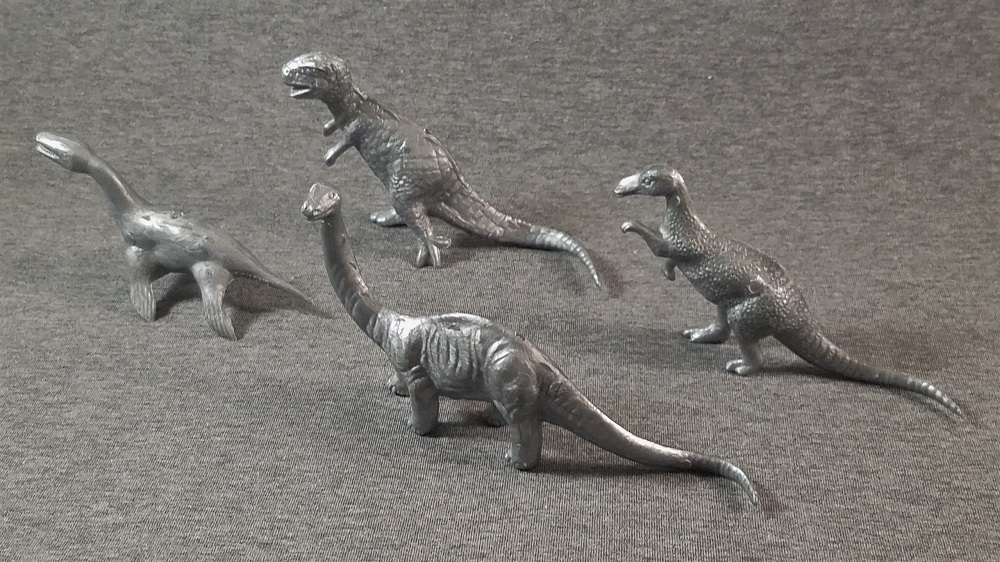
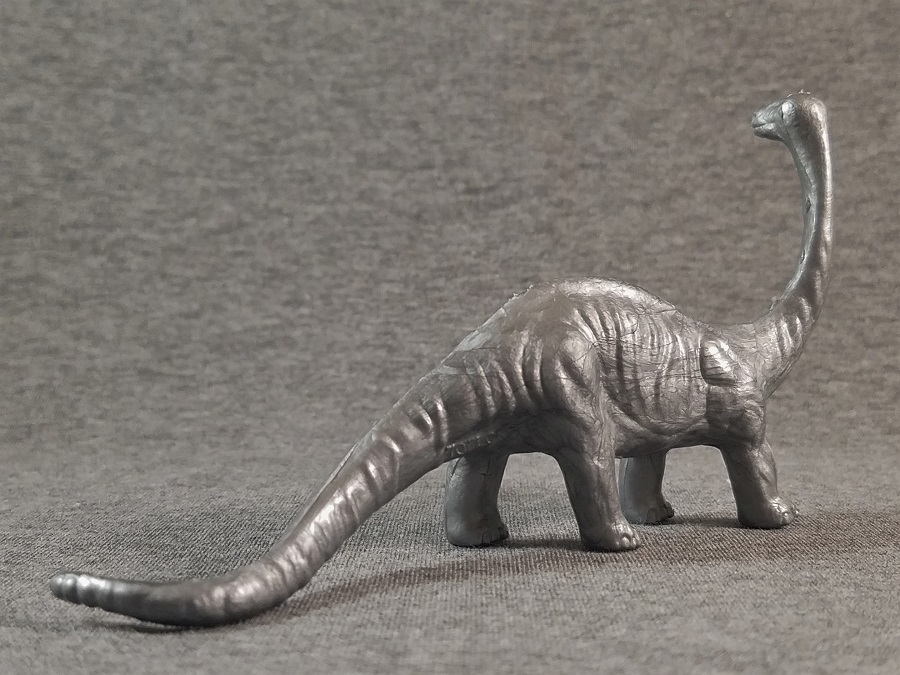
MPC’s Brontosaurus measures about 13 cm (5 in) long, although stretched out straight it would be closer to 16 cm (6.5 in). Either way, this is a considerably smaller model than its Marxian predecessor, which was one of the largest models in the series. MPC’s molds tended to be on a slightly smaller scale in comparison to Marx, and this was most evident with the Brontosaurus. The MPC figure is also smaller-looking in basic body shape; rather than a robust and rounded physique, this sauropod is looking quite lean, with sagging folds of skin along its flanks. The Dinosaur Collector A site notes that MPC’s design bears some resemblance to a scaled diorama model featured at the Smithsonian Natural History Museum, in contrast to the Rudolph Zallinger influences for Marx.
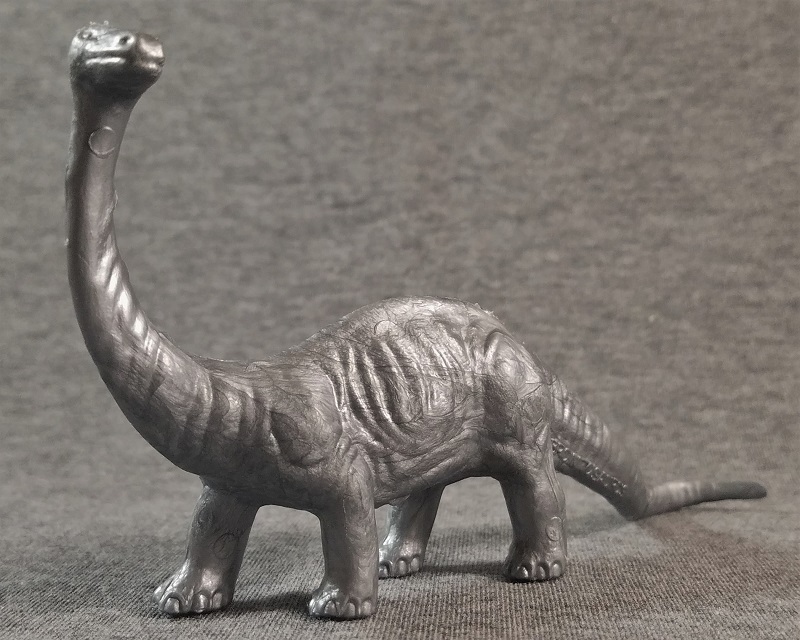
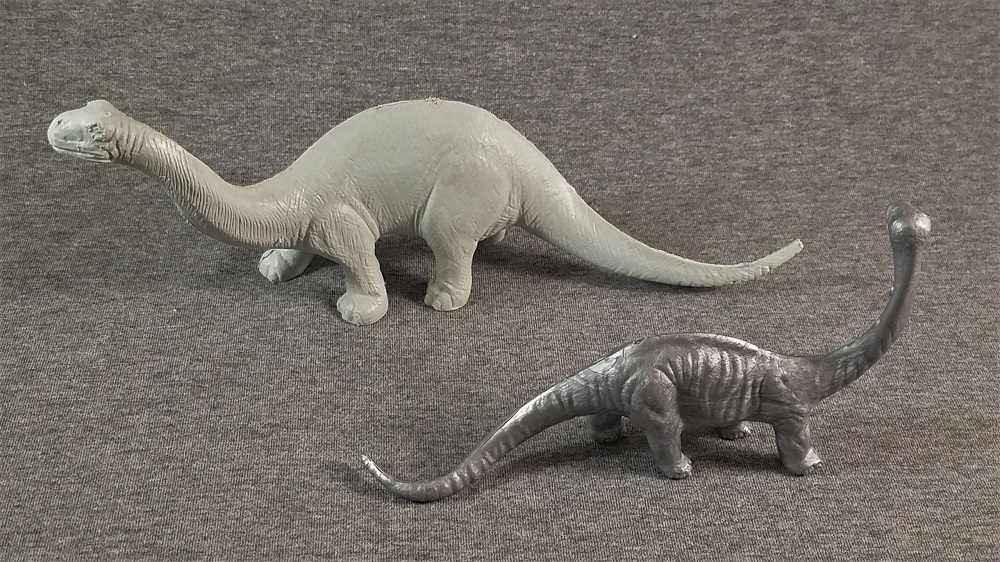
The legs on the figure are stout and stumpy as one might expect, but lacking in definition (there’s some musculature in the upper limb and shoulder/hip regions). Six toes – or rather, toenails, by the way they’re sculpted – circle each foot in a generic elephantine design. The tail snakes low along the ground with wrinkles and creases to the curvature of the shape, and the neck is raised high, head turned as though alerted to some unknown disturbance in the distance. Perhaps the most distinctive historical trait of Brontosaurus is its skull, which was mistakenly represented by a Camarasaurus for decades; however the MPC figure has a flattened, smooth amphibian-like head which doesn’t really resemble a Camarasaurus any more than it does the correct diplodocid shape we know of now.


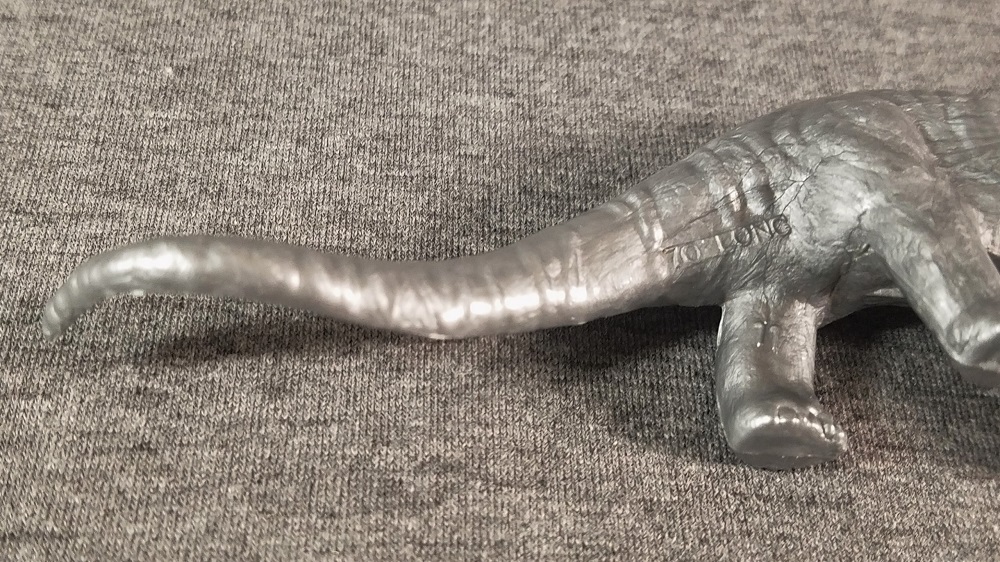
Over the years, MPC would issue their figures in a variety of colored plastics. The initial releases of Mold Group 1 from 1961 were typically in silver, deep blue, or light gray. Other shades of blue & gray, as well as yellows and reddish-browns, were used for later sets in different figure assortments. In 1965 the Brontosaurus and 11 other molds from MPC were used for cereal premium toys and giveaways, replacing the Lido molds Nabisco originally featured. These new editions of the MPC figures came in a much more saturated range of colors than before, and tend to be less common today. Naturally, the Nabisco releases have become more highly prized by collectors than the rest; I’ve had a few copies of Brontosaurus through my own collection recently, and without a doubt my favorite version has been the Nabisco purple, which is pictured in this review. The Nabisco colors are richer and deeper than other versions, which bring the most out of the details the sculpts have to provide.

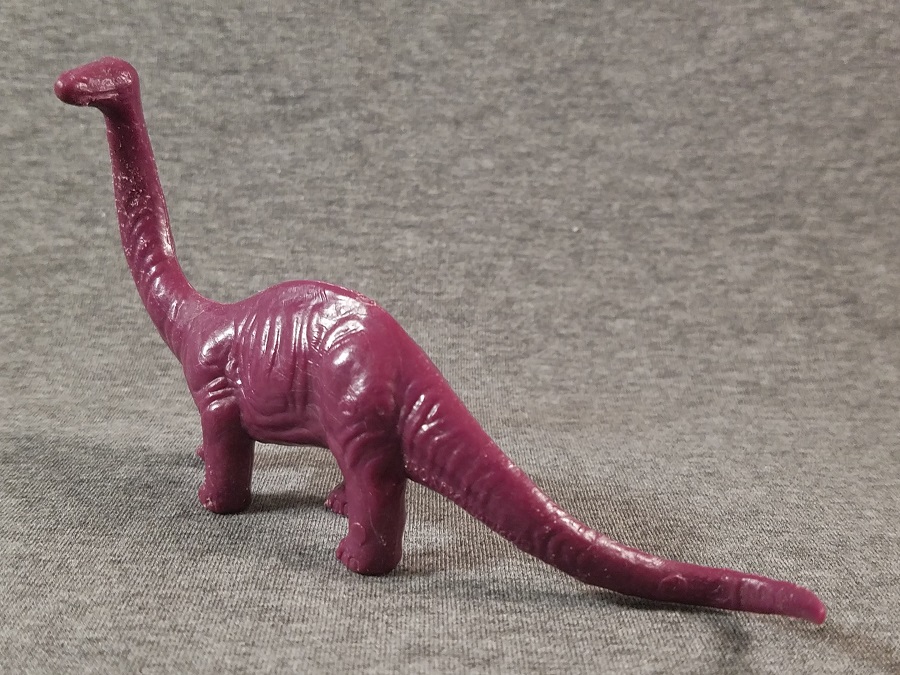
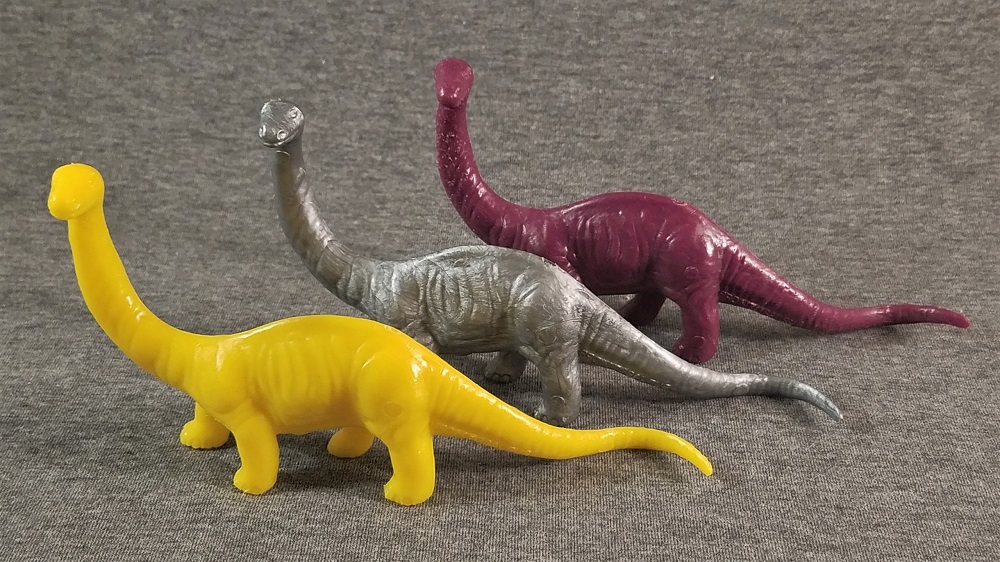
MPC figures have something of a reputation as the poorer man’s (child’s?) Marx toys; the Brontosaurus, despite it’s relative originality, still doesn’t compare favorably to its predecessor. For many young fans, however, the MPC thunder lizard was undoubtedly a staple of childhood, and I must admit the toy’s charm grows on me when I have a little multicolored herd of them available for display. In the following year of 1962, MPC would show more of its capabilities with a handful of genuinely new and surprisingly unique species for the line; for collectors today, the Brontosaurus is a relic, a curious piece of memorabilia nestled between older, greater inspirations, and better things yet to come.
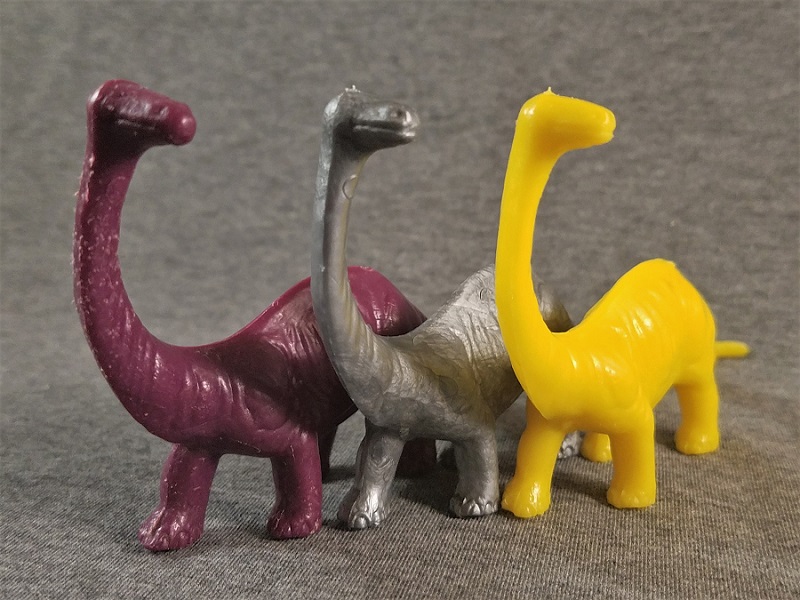
Disclaimer: links to Ebay and Amazon on the DinoToyBlog are affiliate links, so we make a small commission if you use them. Thanks for supporting us!




While purple seems to be a collector favorite, it is not the rarest color. Yellow & orange are the most common, deep cobalt blue is scarcer than purple but olive green & esp deep cherry red are rarer still. Also, except for the deep banana yellow & the aforementioned red, there seems to be variants of shades- a flat colored version & a deeper waxy looking color which seem to be scarcer. There also seems to scarcity based on which mold group- the T rex group is scarcer to rare in all colors but some colors may not exist or are extremely rate- has anyone seen the Styracosaur/Diatryma group in red or green that are real MPC & not Winneco? Let me know.
Glad someone else noticed the Timpo Influence.
The sculpt for this Brontosaurus was based on the Timpo brontosaurus. If you compare the two they are very close, the timpo is slightly larger and is looking backwards instead of sideways.
Lovely review Fembrogon and great pictures. It’s a pity MPC didn’t take the same approach to their Marx copies as they came up with nice sculpts when they weren’t plagiarising! They could also have got away, for the 1960s, with calling it a Diplodocus!
Ah, back to a much simpler time without all the obsession on accuracy ! I love these figures and their bright fun colors!